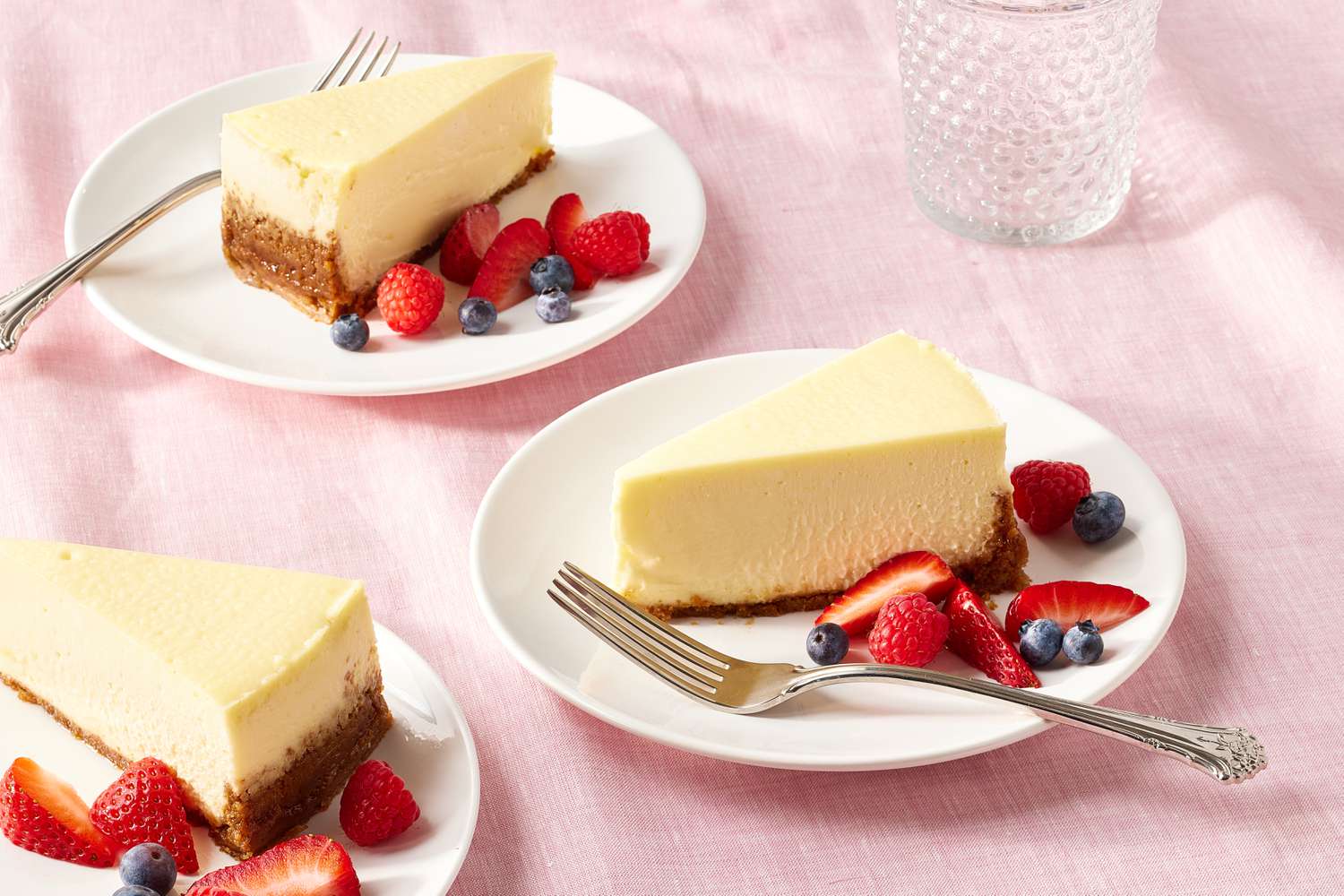
33 interesting facts about cheesecake
- 👁️ 308
Cheesecake is not just a dessert; it’s a culinary canvas that blends history, culture, and flavor in each creamy slice. From its ancient Greek origins to the modern-day variations, cheesecake has been a favorite for centuries. The rich, soft texture of cheesecake combined with its versatility in flavors makes it a unique treat enjoyed worldwide. Whether it’s the classic New York style or an inventive new twist with exotic ingredients, cheesecake offers a delightful experience that appeals to both traditionalists and adventurous foodies alike. Here are some interesting facts about this beloved dessert that might surprise even the most avid cheesecake fans.
- The earliest cheesecake was created on the Greek island of Samos over 4,000 years ago.
- Ancient Greeks served cheesecake to athletes at the first Olympic games in 776 BC as a source of energy.
- The Romans spread the popularity of cheesecake across Europe after conquering Greece.
- The basic ingredients of ancient cheesecakes were simple—cheese, honey, and wheat flour.
- The first printed cheesecake recipe appeared in an English cookbook in 1390.
- In the United States, cream cheese was invented in 1872, which revolutionized cheesecake making.
- New York style cheesecake uses extra egg yolks for a richer and creamier texture.
- Philadelphia style cheesecake is known for being lighter and creamier than New York style.
- Italian cheesecakes generally incorporate ricotta cheese, giving them a slightly grainy texture.
- French cheesecakes are typically very light and may include gelatin for a delicate consistency.
- The Japanese cheesecake is famously fluffy and souffle-like, thanks to whipped egg whites.
- Cheesecake was a popular dish in medieval times, often served at religious festivals and weddings.
- The largest cheesecake ever made weighed 6,900 pounds and was created in Mexico in 2009.
- National Cheesecake Day is celebrated on July 30th in the United States.
- Some cheesecakes use cottage cheese instead of cream cheese for a chunkier texture.
- In Scotland, a savory version of cheesecake is made with mashed potatoes and cheese.
- Vegan cheesecakes often use cashew nuts or tofu as a base to mimic the creamy texture.
- Pumpkin cheesecake becomes popular in the U.S. during the fall, especially around Thanksgiving.
- Some modern cheesecakes incorporate flavors like matcha, lavender, and even bacon.
- The term “cheesecake” was used in the 1660s, but initially did not refer to the dessert we know today.
- Some cheesecakes are baked, while others are set by refrigeration without any baking involved.
- Sour cream is often added to the cheesecake batter to add richness and help prevent cracking.
- The springform pan, commonly used for making cheesecake, was invented in Germany.
- Chocolate cheesecake was not common until the discovery and popularity of cocoa in Europe.
- Historical records show that cheesecake was served to the athletes during the first Olympic games.
- The traditional New York cheesecake was popularized by Jewish delis in the early 20th century.
- Some cheesecakes are made with a sponge cake base instead of a biscuit or graham cracker crust.
- A common trick to prevent the surface from cracking is to bake the cheesecake in a water bath.
- Blueberry cheesecake is one of the most popular flavors worldwide.
- In Russia, cheesecakes are typically made with tvorog, a type of quark cheese.
- Gourmet cheesecakes sometimes feature layers of different flavors and textures.
- Salted caramel cheesecake is a modern favorite that combines sweet and savory notes.
- The consistency and flavor of cheesecake can vary widely depending on the type of cheese used.
Cheesecake is not just a beloved dessert; it’s a versatile culinary phenomenon that has evolved over thousands of years. From its humble beginnings on the Greek islands to the elaborate and diverse variations we enjoy today, cheesecake has stood the test of time, continually adapting to new tastes and cultures. It serves as a reminder of how food can transcend time and geography, connecting us through a shared love of rich, creamy sweetness. Whether enjoyed as a luxurious treat or a comforting snack, cheesecake remains a testament to culinary creativity and tradition.
Cheesecake is not just a dessert; it’s a culinary canvas that blends history, culture, and flavor in each creamy slice. From its ancient Greek origins to the modern-day variations, cheesecake has been a favorite for centuries. The rich, soft texture of cheesecake combined with its versatility in flavors makes it…